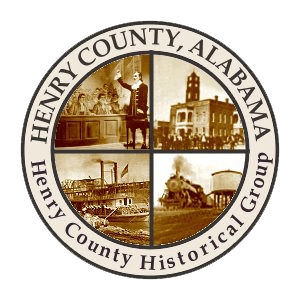
by Dr. Marty Olliff
The HCHG’s hosting of the Smithsonian Institute’s Museum on Main Street traveling exhibit, “Between Fences” brings not only a unique opportunity for area residents to see a remarkable museum piece about national history but also a chance for Henry Countians to experience some of their own history. The Smithsonian and its state partner, the Alabama Humanities Foundation encourages hosts to create local tie-ins before, during, and after the six week run of the “Between Fences” display.
Henry County—one of the six Alabama hosts—has done just that. The Blanche Solomon Memorial Library in Headland has held a summer reading program for children built around the Fences theme, has hosted a photography contest, and will host an essay contest for students. The Archives of Wiregrass History and Culture has assembled a museum display that focuses on the changing boundaries of Henry County that will travel to area schools. And the HCHG will host a series of public lectures during the display.
The “Between Fences” Speakers Symposium will feature the following lectures about Henry County’s early boundaries and neighbors: Sunday, May 6: Neighbors to the South: The Ellicott Line and West Florida. Pinckney’s Treaty of 1795 established the border between Spanish West Florida and the United States at the 31st parallel. President George Washington commissioned Andrew Ellicott, surveyor of the western boundary of Pennsylvania and, later, of Washington, DC, to survey the treaty line from the Mississippi River to the Atlantic Ocean. Although the Spanish exercised nominal control over its West Florida territory, the British still maintained a significant presence there, particularly in the area east of Pensacola. Greg Spies, noted author, Assistant Professor of Geomatics at Troy University, and participant in the 1990s re-survey of the Ellicott Line will discuss Andrew Ellicott’s important work.
Emeritus Professor of History from Auburn University, Robin Fabel, will talk about the internal politics of West Florida and its influence on Alabama and the south prior to Alabama’s statehood. Dr. Fabel is the author of four books on British West Florida and served as a Fulbright Scholar in 1967 and 1998.
Sunday, May 20: Neighbors to the North: The Creek Nation
The United States, the Alabama Territory, and ultimately Henry County intruded on the lands of the Lower Creek Confederacy. Even after some of their leaders signed treaties that gave away possession of the lands, many Creeks felt they retained some claims to it. Who were the Creeks? How did the Creek Nation arise? How did the Creek people and nation conceptualize their relations with their problematic neighbors? Dr. Kathryn Braund, former independent scholar, author of four books on Creek life, and currently Professor of History at Auburn University, will examine Creek views on boundaries, borders, and the possession of property. She is joined by Dr. Steven Hahn of St. Olaf College in Minnesota. Hahn, a graduate of Emory University, authored a recent book about the formation of the Creek nation. He will discuss the imperial rivalry among Britain, Spain, and France over Creek territory and how Creeks tried to retain control of their lands even after passing suzerainty to the western powers.
Sunday, June 3: Henry’s Eastern Borderline—The Chattahoochee River
The Chattahoochee River was both a difficult-to-cross boundary and a communications and trade lifeline in the years before railroad and automobile transportation. It is, then, a 19th century “fence” between the unsettled cotton lands of Alabama and the farmers pressing westward from Georgia and the Carolinas. The river has a much longer history, one that Dr. Lynn Willoughby will explore. Willoughby is the author of two books on the lower Chattahoochee River. Like Dr. Hahn’s examination of Britain’s, France’s, and Spain’s dealings with the Creeks, Willoughby’s talk will focus on those countries’ 18th century imperial ambitions regarding the river itself.
Dr. John Lupold and Mr. Thomas French, Jr. will take a different tack. If the Chattahoochee River was a fence, then bridges were its gates. Lupold and French will examine the life and work of the river’s “gatekeeper,” the bridge-building former slave Horace King. Lupold and French have written a definitive biography of King, and their presentation neatly sums up the “Fences” theme by showing how those fences are breached.
Each Symposium is free and will begin at 2:30 p.m. in the Council Chambers of Headland’s City Hall. Speakers will present for thirty minutes each, and there will be 30 minutes at the end for discussion and refreshments provided by the Study Club of Headland. In addition, the “Between Fences” display will be open in the Solomon Library (next door to the Council Chambers) from 2:30 until 5:00 on those Sundays. The HCHG hopes Symposia attendees will visit the exhibit.
[Dr. Marty Olliff, is the Director of the Archives of Wiregrass History and Culture, Troy University—Dothan Campus]
Symposium Schedule
May 6th Ellicott Line and West Florida
May 20th The Creek Nation
June 3rd The Chattahoochee River
City Hall
Headland, Alabama
2:30 p.m.



